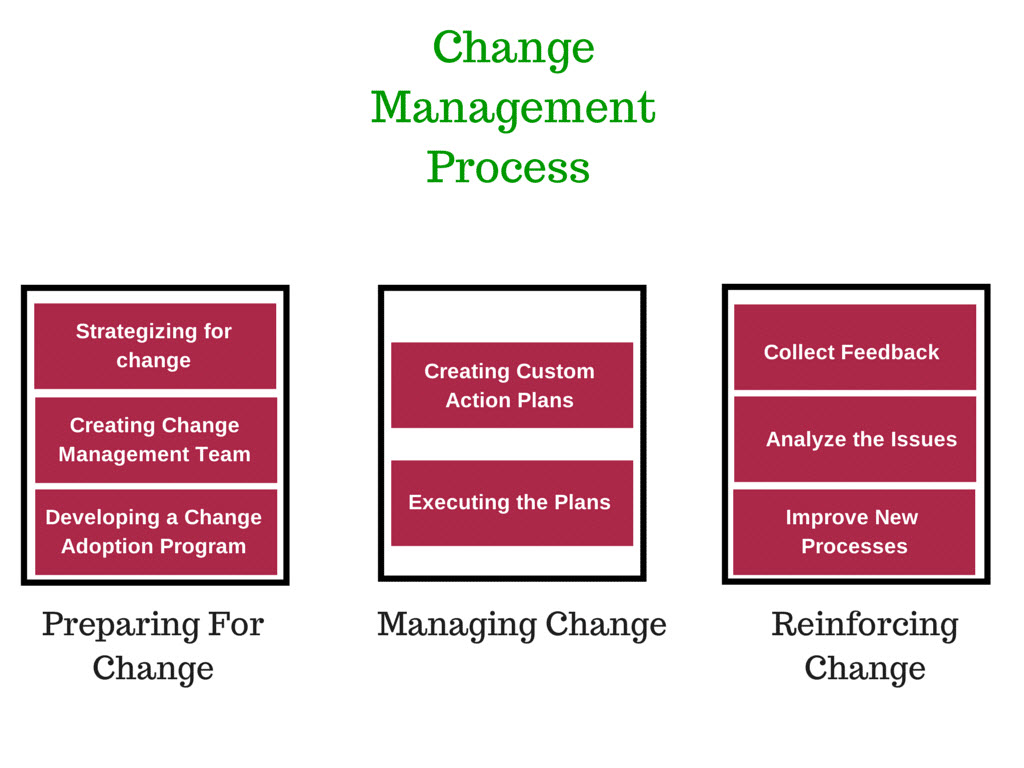Change Management is an essential management concept that encompasses human resources (HR), leadership, and the structure of the company. Change Management also includes aspects of planning, organizing, staffing, deployment, and transitions. It is an interdisciplinary field that seeks to enhance the performance and quality of an organization by ensuring its process and data are well-organized and managed. Change Management is one of the leading fields that focus on supporting organizations through change. Many companies have long looked at the concept of Change Management as the method by which they can improve their businesses and the bottom line while effectively managing change. The field of change management involves many different areas such as strategic management, leadership, decision-making, human resources, manufacturing, financial services, technology, marketing, and business analytics.
Change Management is the process of integrating people, processes, technologies, information, and systems so that changes occur in the workplaces and in the operations within the organization. In other words, change management is a collective effort to plan, organize, deploy, and staff changes. Change Management is vital in any organization as it effectively deals with conflict, promotes communication between employees and managers, provides workers and employers an opportunity to resolve conflicts, and helps to foster teamwork. In order to be successful in the field of change management, managers must have both technical skills and interpersonal skills. The success of change management lies in the combination of both technical skills and interpersonal skills.
Change Management is not a one-way street; rather, it relies on the involvement of employees, customers, and suppliers in order for change management to be effective. There are four major strategies used in the field of organizational change management. These include; first, top-down change management, which is the traditional way of managing change. This process relies on informational communication from those in power to those affected by the change. This form of change management is not effective because employees become apathetic toward their boss due to the lack of information they receive regarding the change.
Second, bottom-up change management is similar to the first strategy, but instead of coming from those in power, it comes from those who need the information. In this case, change management is implemented through employees, suppliers, and other interested parties. This form of organizational change management depends upon the sharing of information and the generation of different forms of data. Thirdly, third-party change management is conducted when external agencies are called in to handle changes within an organization. This occurs whenever an organization faces organizational change when it experiences a growth spurt, when it is experiencing a decrease in productivity, or when it needs to implement organizational policies or reforms in response to external pressures.

The fourth strategy of change management is known as the ADKAR model. The ADKAR model is based on two main concepts. According to the ADKAR model, there is a need for open communication when changing an organization; and, the leaders must accept the organizational changes, which will come about. The ADKAR approach in change management is similar to the requirement for open communication in managing any type of change. Fifthly, according to the ADKAR approach, the key to successful management is accepting that changes will take place.
Change Management requires two key strategies: one, the top-down strategy, and the bottom-up strategy. For the top-down strategy, the leaders create an opportunity for dialogue with employees and with key customers. It is through this dialogue, based on respect and openness, that employees and key customers may perceive the organization’s changing needs. And lastly, for the bottom-up strategy, leaders need to ensure that organizational culture remains strong, to sustain organizational productivity. This can be done by creating an environment of trust, open communication, good relationships, clear expectations, feedback mechanisms, and rewarding employees and supervisors when they perform well.

About the Author – Nitin Jain is the CEO and Founder of India PR Distribution – www.indiaprdistribution.com. He is a serial entrepreneur, presently heading and managing multiple Startups. Nitin Jain is also a Branding & Digital Marketing Consultant for various SMEs and Fortune500 companies.
This article includes sponsored content. The views expressed are those of the sponsor and do not necessarily reflect the official policy or position of our publication.

